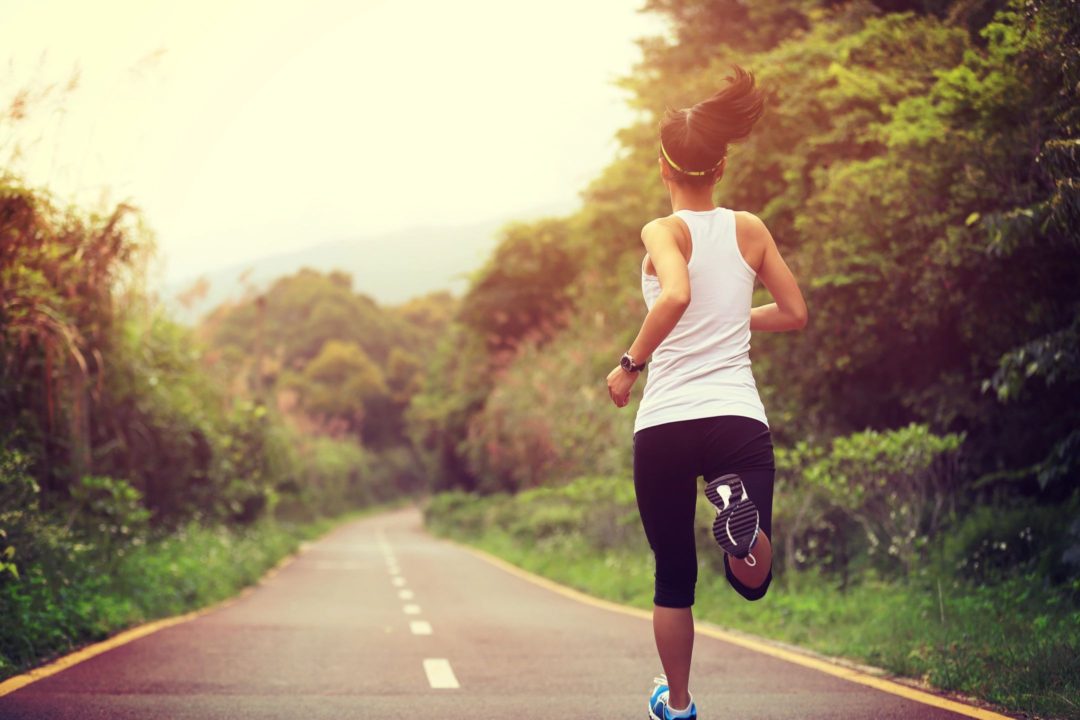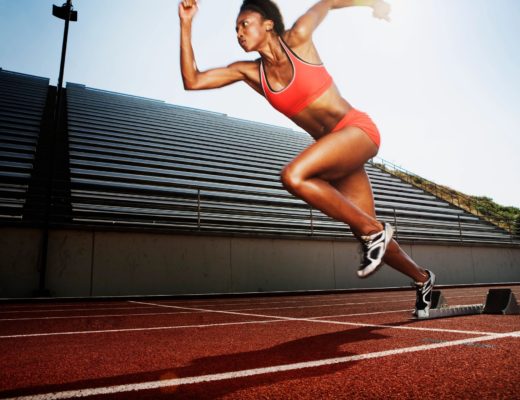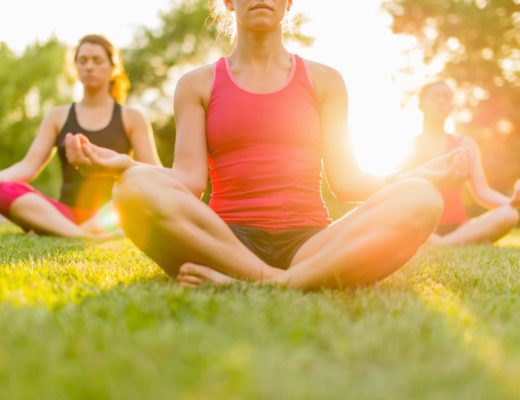Secrets for Speed
Speed is great, there’s no denying it, but there can be too much of a good thing. What good is all the speed in the world if you can’t control it (see clip below)? The one exception would be in the track world, where running in a straight line can bring you the title of world’s greatest. For all other athletes there typically is a time when you will need to slow down and change directions, then speed up again. This DECELERATION and ACCELERATION are the keys for those that want to get the edge on the competition, and acceleration is the first thing I teach when it comes to speed training.
Acceleration is where all sport movement begins, and if you want to be able to move as fast and as efficiently as possible, there are techniques and strategies for developing these skills. Below, I have broken down the building blocks for acceleration into four parts that are essential for those wanting to develop elite speed.
But before we get to the four parts, we need to think about acceleration in two different scenarios, Static and Dynamic.
1) Examples of Static acceleration include a Wide Receiver on the line of scrimmage, and a sprinter awaiting the gun in the blocks. This requires the proper starting stance, which I will cover in another blog.
2) Examples of Dynamic acceleration include a shortstop chasing down a ground ball then making the tag at the bag. This is where the majority of our fastest acceleration comes from. Many sports like soccer and basketball don’t allow time for standing still for very long; instead there is a constant stop and go throughout the game. You must be able to adjust your body in an instant in order to get that first quick step to gain the advantage. I have broken down acceleration into four parts that will be essential for those wanting to develop elite speed.
These next four parts seem to be overlooked by a lot of coaches. I believe that when your Posture is rigid yet relaxed, your Body Awareness is second nature, and Rhythm is harmonized you will blow past the competition with ease. When these first three are mastered it makes for an easy time learning proper Deceleration, the fourth and final component.
Posture

Stacking your joints provides the best transfer of force. Any break, bend or twist will led to loss of power.
Posture should come in the form of a “power line.” This is a line that you can draw from the athlete’s ear down to the heel while passing through the shoulders, hips and knees. The power line must be accomplished at multiple angles in order to master acceleration in multiple directions. The power line, in conjunction with a braced spine, is absolutely necessary for an athlete to be able to run his or her fastest without injury or wasted movements. Our limbs are designed to function around a stable torso. I use the phrase “core to extremity” to instill the mindset that we first must brace and engage the torso for proper power transfer from the ground through the legs and then the rest of the body. One exercise to develop and encourage proper posture is the high knee walking lunge.
* High Knee Walking Lunges – In a typical lunge, the athlete takes a generous step forward and lowers the hips until the back knee kisses the ground, then stands back up bringing the feet together. I like to add in an overhead reach at the bottom to ensure posture and provide a stretch for the hip flexor of the rear leg as an added bonus.
* High Knee March with overhead reach-Video below
Body awareness
Each ground contact (every time the foot strikes the ground) is an opportunity that can either help us move forward or slow us down. In the track in field world they call these braking forces. This happens when we make contact with the ground in front of our center of mass. Think about riding in a canoe; if you just stick your paddle in the water in the opposite angle you are essentially hitting the brakes and will slow down.
Athletes must be aware of each angle the body produces as a result of the legs and arms driving back and forth and be able to make adjustments as needed. If they are able to maintain aggressive angles of the shins and torso, they will be able to make ground contact under –or ideally behind– the center of mass, which will push them forward and build more and more momentum as speed increases. A very effective exercise to increase body awareness when running is the wall drill, and single leg hops help with this as well.
*Wall Drill– Video below
*Single Leg Hop– Keeping one foot off the ground and hopping with the other is great for learning how to balance and engage the body while moving through space. At first, athletes should try to control and “stick” the landing on each hop. Once control is established, quicker consecutive hops can be added into the mix. Keep the body aligned and arms pumping as if running.
Rhythm (coordination + timing)
While accelerating I like to teach athletes to think about their legs pumping like pistons, syncing their hip action so that when one leg is coming up, the other is going down at the same time. This will put the athlete in the best position to produce the most force into the ground in the least amount of time. It is also important to sync the upper body action with the lower body to resist any rotational movement and aid in force production.
*High Knee switches– This drill emphasizes the timing of the piston action that we are looking for. This is also a great drill for teaching posture. With one knee at hip height and the ankle engaged, wait for the call to switch the legs as fast as possible. Ideally the athlete should drive the foot down and the other knee up at the same time. This will ensure that there is no lack of coordination. Be mindful of balance as well.
*Mountain Climbers– From a push-up position, drive one knee in between your elbows with the other leg extending back behind you. This one can be played out a few different ways. You can work on quickness and coordination, just like the high knee switch, and switch out the legs as fast as possible. Or you can turn this into a strength piece where the focus becomes holding the position and go for more reps.
*Arm swing drill– Sitting on the ground with the legs straight out in front, bring up one arm with the elbow flexed at 90 degrees, and the other hand at the back pocket with the elbow at 90 degrees. On the call or for time, switch the hands as fast as possible. When done with enough speed and harmony, you will start to notice the hips may bounce off the ground. This will only happen with the trunk is stabilized and the arms are moving fast enough.
Deceleration
This is the granddaddy of them all, where body control can take you to the next level. Being prepared to stop is crucial in sports where you have to guard someone or track a ball. Most of the time when guarding someone, they may fake in one direction and then go in another, which requires the athlete to be able to move fast enough to stay with them and the quickness to be able to stop and go in any direction the opponent may choose. There is also a bonus adaptation that comes with deceleration training. Typically this type of training involves a lot of eccentric contractions (producing force while the muscle is lengthening), which take a bigger toll on the tissues but offer a greater return in tensile strength of the tendons. This is wonderful for those looking to avoid injury.
*Start and stop– sprint in one direction, then at a cone 5-10 yards away stop as fast as possible while under control. Think of it like the P.E. class game “Red light, Green Light”
There is much more to sprinting; this is a glimpse of the fundamentals along with of some of my favorite drills. Give these a try and with a clear intention you will start to see progress with you speed.
For more drills check out my Youtube page by clicking HERE
-Travis Goyeneche




